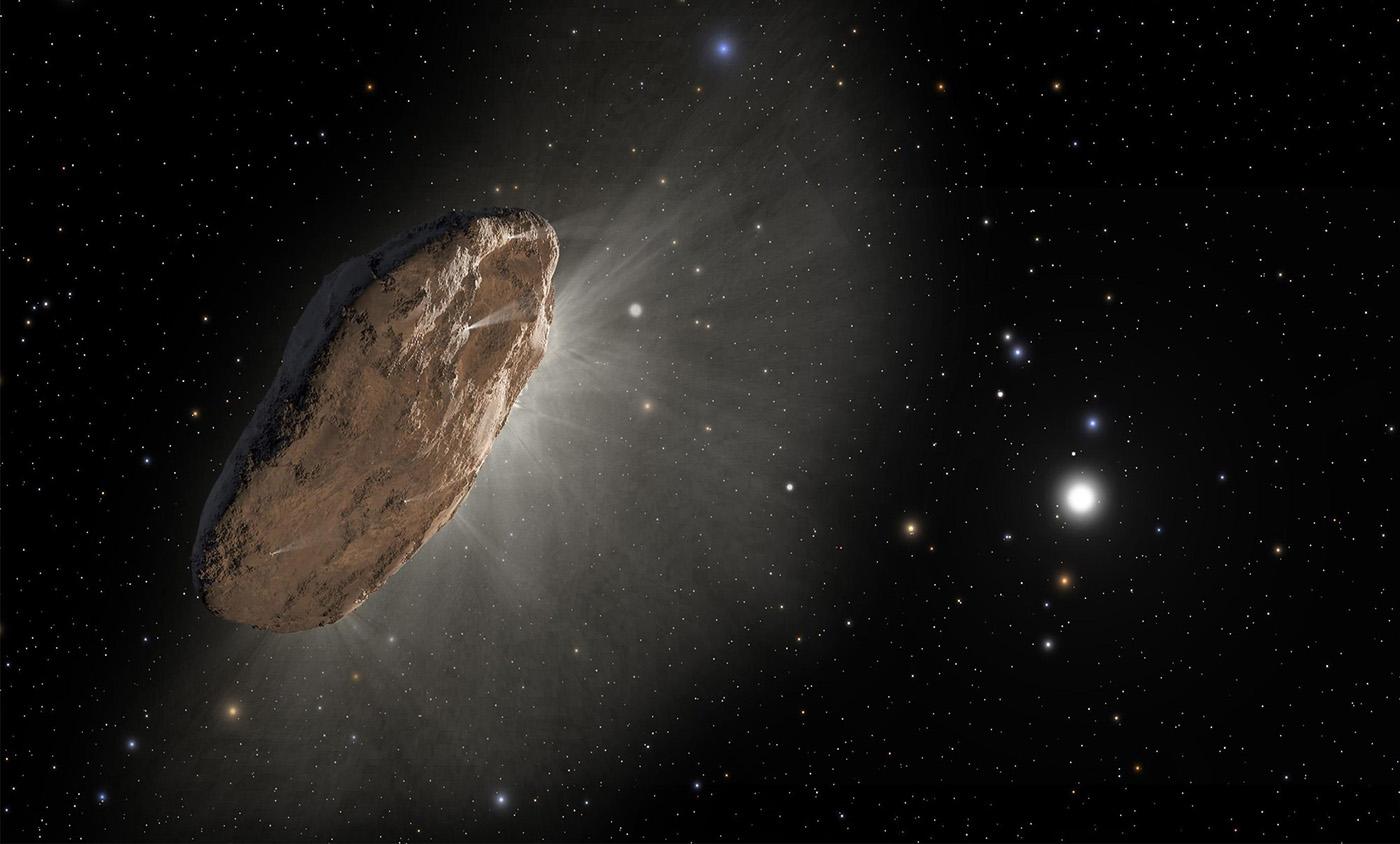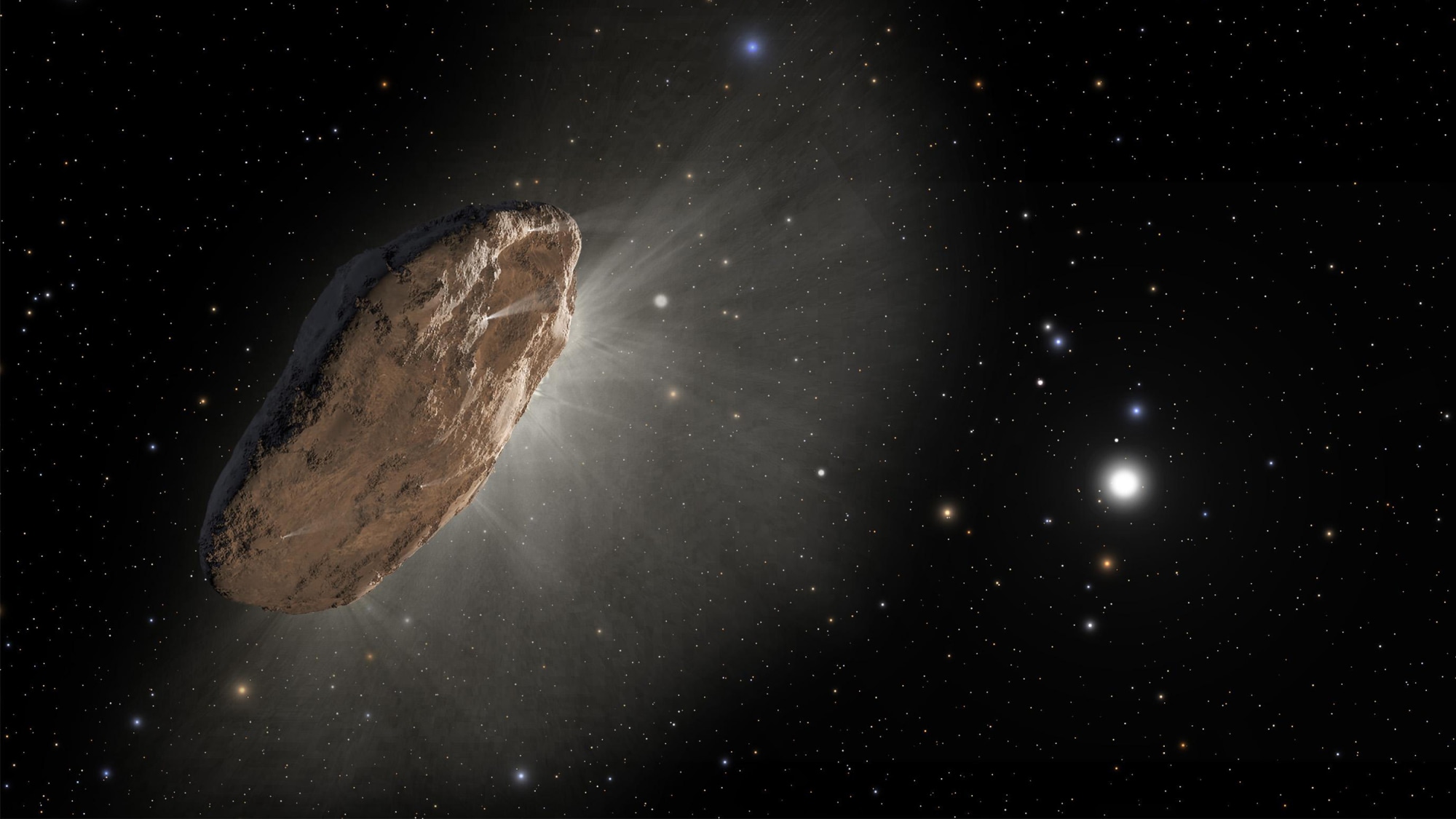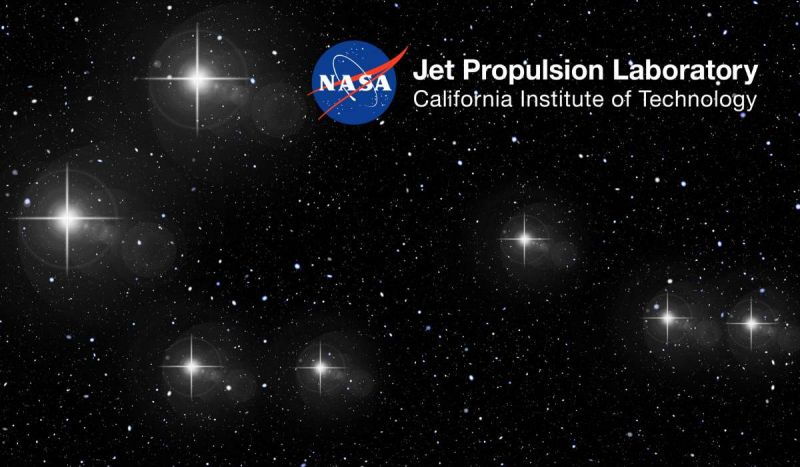
Searching for signals has been a SETI mainstay since the field’s infancy, but is it the only way to search for advanced extraterrestrial life? Researchers are exploring other means of detecting extraterrestrials – methods that don’t depend on catching a message sent our way. Writing for NBC News MACH, SETI Institute Senior Astronomer Seth Shostak unpacked why the classic approach to SETI is so challenging:
Picking up an alien civilization’s transmissions requires that the signal reach your telescope at the very moment that you’re pointing it in their direction. This is SETI’s well-known “synchronicity” problem, and it’s been likened to firing a bullet and expecting that it will intercept, head-on, another bullet shot by someone else. Improbable.
A way to sidestep this problem is to look for alien structures – physical artifacts of advanced engineering that endure far longer than an errant signal and perhaps far longer than the civilization that created them:
In contrast, artifacts may be lurking in space just waiting our discovery, all night, every night. China’s Great Wall and the Egyptian pyramids are earthly constructions that have existed for centuries. Finding them doesn’t demand much synchronicity.
None have been found to date, but the episodic dimming Tabby’s Star, detected in 2015, was considered as a possible sign of an alien structure. Other explanations have since been found. Nonetheless, as technology brings observation capabilities to new heights, the search for technosignatures represents the next frontier of SETI research.
 Messaging ET: Are We Ready?
Messaging ET: Are We Ready?New Scientist recently did a profile of Project Starshot, part of science program funded by Yuri Milner. The aim of the project is to send a number of probes to the nearest star at very high speed, in order to search for extraterrestrial life. A section described the continued conversation over the merits and risks of making first contact: is sending out a message to our neighbors among the stars a good idea? Jill Tarter, Chair Emeritus for SETI Research at the SETI Institute, thinks a message might be premature at our current technological stage:
Jill Tarter of the SETI Institute in California thinks humanity isn’t yet developed enough to take on a transmission project. “Any finite transmission will pass over the intended recipient for a finite time and they must be looking at us in just the right way during that finite time, or the message will be missed,” she says.
Instead of a message-in-a-bottle approach, a long-term strategy would greatly increase the chances of it being discovered by another intelligent species. And when we develop the technology, Tarter says, we’ll be ready:
“It’s going to be a while before we can execute on 10,000 or 100,000-year plans, but when we’ve managed to become an advanced technological civilization ourselves, then we should transmit.”
The SETI Institute currently focuses its SETI research solely on detection.
 Panspermia: How Objects like ‘Oumuamua Might Spread of Life through the Universe
Panspermia: How Objects like ‘Oumuamua Might Spread of Life through the Universe‘Oumuamua caused quite a stir when it was detected in 2017, hailed as the first interstellar object to be detected. However, Harvard astronomer Avi Loeb suspects another interstellar object may have hit Earth’s atmosphere back in 2014. In a paper available on arXive.org, Loeb and Harvard undergraduate Amir Siraj describe how data collected from U.S. Government missile-detection sensors picked up a meteor moving at a speed and direction that indicate it came from outside our solar system. While the object itself likely disintegrated in our atmosphere, this presents a tantalizing research opportunity. Not only does it suggest these objects might be common, but finding such an object in the future could reveal a great deal about far away planetary systems - those well beyond our ability to reach due to the incredible distances involved.
Perhaps even more compellingly, finding such an object may help to explain the origin of life. Some astronomers suggest that the origin of organic molecules on Earth that life arose from might in fact be from beyond our Solar System. SETI Institute Senior Planetary Astronomer Franck Marchis elaborated in an article on NBC News MACH:
“We have suspected that panspermia, the seeding of life between planets and planetary systems, could help spread life across our galaxy,” said Franck Marchis, a senior planetary astronomer at the SETI Institute in Mountain View, California. “It will be great to get a fragment of [an interstellar meteor] to truly understand the conditions of the long trip between stars.”
He added that such a trip could last millions of years, and any organic molecules would have to be well-protected to survive.
Whether the meteor indeed came from beyond our Solar System is unconfirmed and some are skeptical of Loeb and Siraj’s results. Scientists hope improved technology will allow us to better detect – and even intercept – future interstellar visitors like ‘Oumuamua.
 Extraterrestrial Diplomacy
Extraterrestrial DiplomacyPresidential hopeful Seth Moulton had a quick response when a Buzzfeed reporter asked him what his response would be to an alien invasion, saying he would serve the extraterrestrials “a classic American meal” of “a beer and a burger” as a diplomatic gesture. SETI Institute Senior Astronomer Seth Shostak, while doubtful that an extraterrestrial’s biochemistry would incline them to our cuisine, says diplomacy is probably the most realistic response:
"If spacecraft from another solar system were to set down on Earth, you can be sure the occupants are technologically far, far beyond us," Seth Shostak, senior astronomer at the SETI Institute in Mountain View, California, told NBC News MACH in an email. "Trying to fight them off would be like cavemen taking on the army's Special Forces .... Diplomacy is the only strategy that might work."
The most effective presidential response to an incursion from space may or may not be a campaign issue you care about, but at least you know the question is being asked.
In last week’s episode, test the limits of language as the team covers teaching humor to AI, talking to ET, and what cheese has to do with sharing a message of peace in Gained in Translation. On our previous week’s episode, meet the creatures that dominated the globe for nearly 165 million years - and dominated screens in the Jurassic Park franchise. Find out why the golden age of dinosaur discovery has just begun, in an encore of Free Range Dinosaurs.
Last time on Facebook Live, SETI Institute CEO Bill Diamond spoke with Nathalie Cabrol about marsquakes. Videos of all past Facebook Live events can be found on our Facebook page: https://www.facebook.com/SETIInstitute/
- 2019 Drake Awards: May 8, 2019, Menlo Park, CA Special guests include Frank Drake, Jill Tarter, Ed Lu, Bill Borucki, Seth Shostak, and Drake Award recipient Jason Wright.
- Silicon Valley Astronomy Lecture Series: May 15, 2019 Los Altos, CA SETI Institute scientist Ross Beyer will present, Charon, Pluto’s Companion: What We’re Learning from New Horizons
- AI for Good Global Summit: May 28-13, 2019, Geneva, Switzerland Bill Diamond, President and CEO of the SETI Institute, and James Parr, Director of Frontier Development Lab (FDL) will be participating in sessions exploring AI and space
- AbSciCon: June 24-28, 2019, Bellevue WA The SETI Institute will be a participating sponsor





